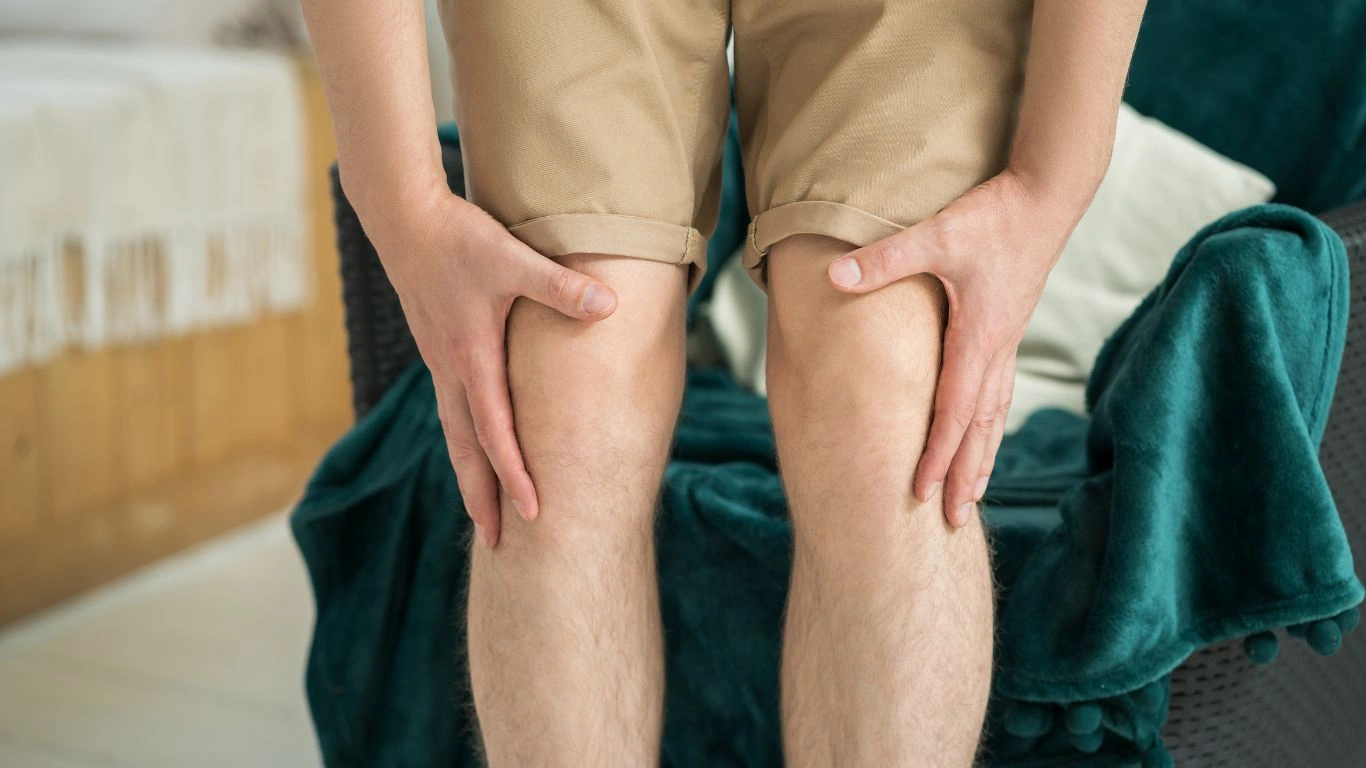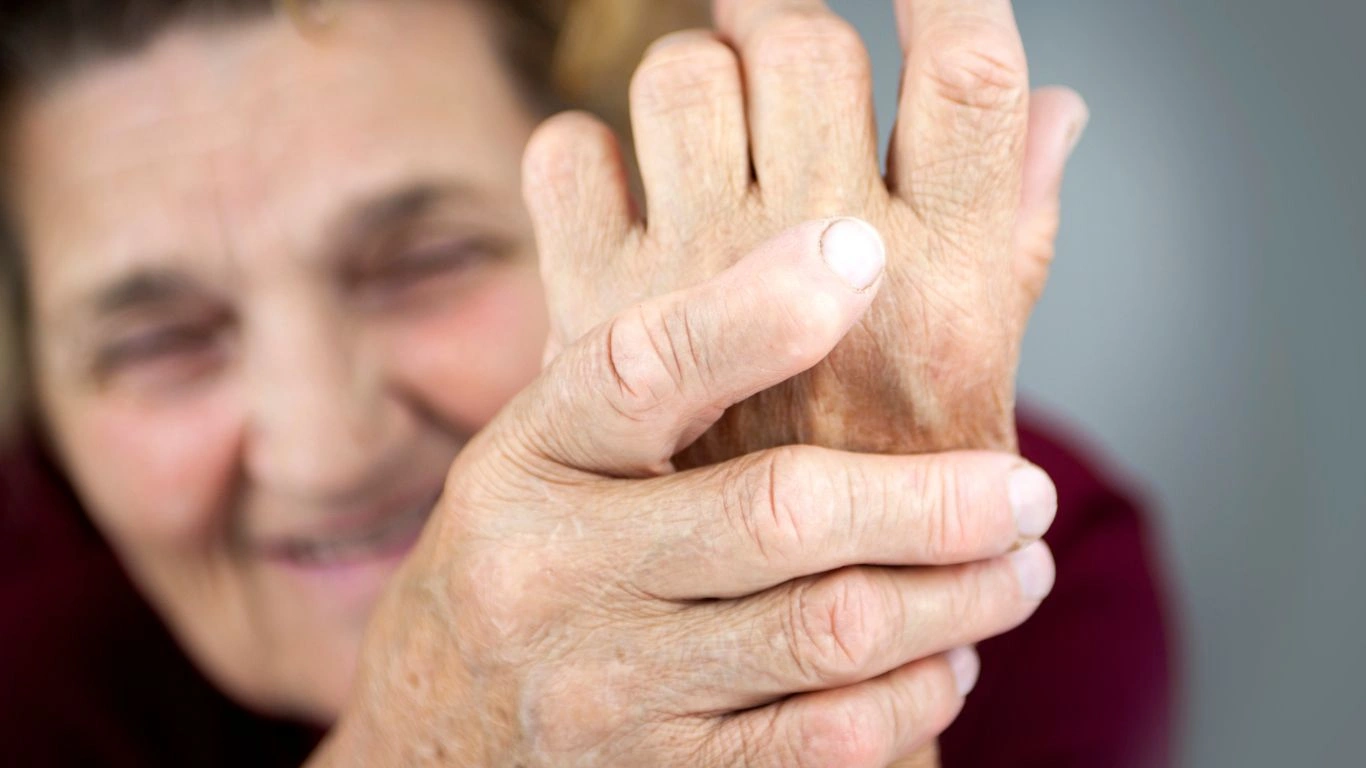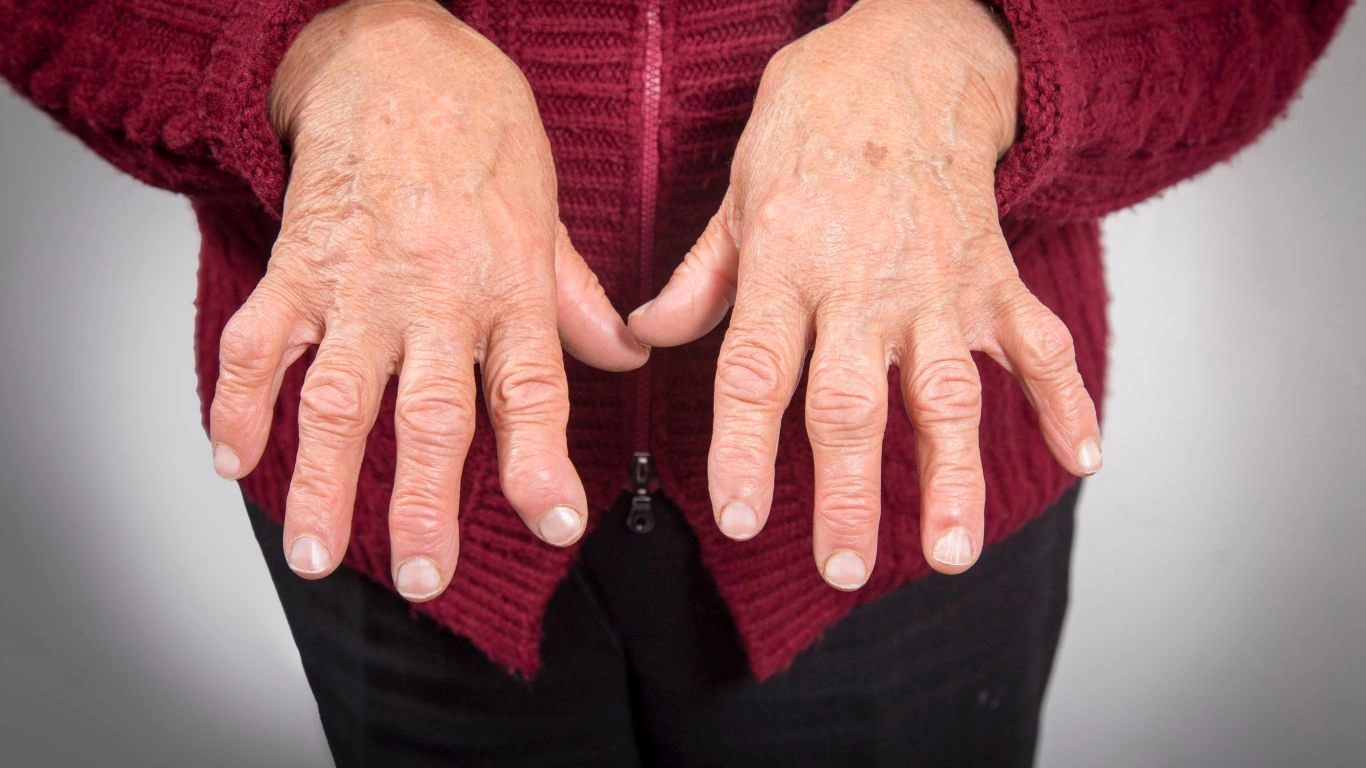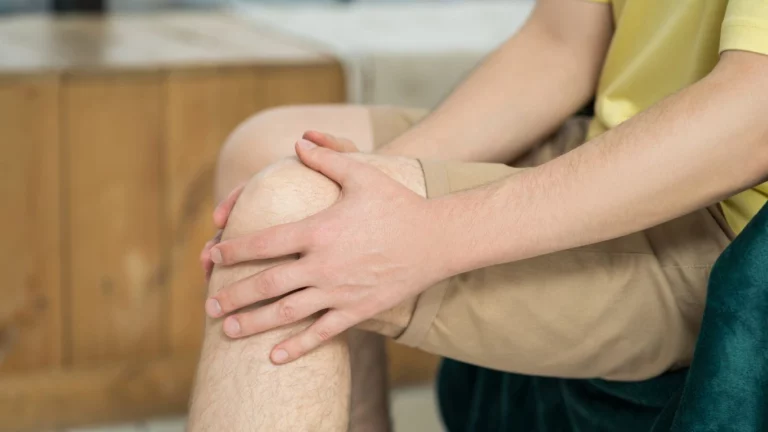How Rheumatoid Arthritis Affects Walking Ability: Practical Tips to Improve Mobility
Rheumatoid arthritis (RA) is a chronic autoimmune condition that affects millions of people worldwide. As a Rheumatology Nurse Practitioner with years of hands-on experience, I’ve seen firsthand how this condition impacts everyday life—especially when it comes to walking ability. If you’re living with RA or know someone who is, you might have noticed that simple tasks like walking, standing up, or even walking short distances become increasingly difficult. This is because RA doesn’t just affect your joints; it also disrupts your mobility, which can lead to a range of physical limitations. So, how exactly does rheumatoid arthritis affect walking ability, and why is it so important to address this early on? Let’s take a deep dive into how RA alters mobility, and what you can do about it.
Understanding Rheumatoid Arthritis and Its Impact on Movement

Before we jump into the specifics of how RA affects walking ability, let’s take a step back and look at the condition itself. Rheumatoid arthritis is an autoimmune disease where the body’s immune system mistakenly attacks the synovium—the lining of the membranes that surround your joints. This causes inflammation, pain, stiffness, and sometimes even joint damage, making movement difficult. It’s not just your typical wear-and-tear arthritis. The inflammation from RA can cause deformities and result in a significant loss of joint function, which naturally impacts your ability to walk smoothly.
In addition to joint pain and swelling, RA can also cause muscle weakness around the affected joints, leading to difficulty with coordination and balance. This can be incredibly frustrating for patients who once led an active lifestyle, as they find themselves unable to walk without support or feeling unstable.
How RA Causes Painful Joints and Decreases Mobility
One of the first things you’ll notice if you have RA is joint pain—especially in the knees, hips, ankles, and feet. These joints are critical for walking, so when they become inflamed, even a short walk can feel unbearable. The pain might be dull and aching at first, but over time, it can worsen, and you may start to experience stiffness, making it hard to bend or straighten your legs.
- Morning stiffness: People with RA often experience the worst pain and stiffness in the morning, after a long period of inactivity. This stiffness can last for hours, making it tough to get out of bed or start moving.
- Increased inflammation: When joints become inflamed, the synovial lining swells and produces fluid, putting additional pressure on the joint. This can lead to pain, swelling, and warmth in the affected areas.
- Joint deformities: Over time, if left untreated, RA can cause permanent joint damage. The bones may become misaligned or even fused, further restricting movement.
What Happens to the Feet and Ankles in RA?

Have you ever tried walking with pain in your feet or ankles? It’s one of the most common and frustrating symptoms of rheumatoid arthritis. The feet and ankles often bear the brunt of the disease, with the inflammation causing noticeable damage to the small joints. This damage can lead to several different issues, including:
- Flatfoot: As the disease progresses, RA can cause the tendons and ligaments in the foot to weaken or stretch. This can result in flatfoot, which alters the way you walk and can make walking extremely painful.
- Hammer toes and bunions: These deformities can develop in the toes due to the inflammatory process in the joints. They can cause discomfort and difficulty in finding comfortable footwear, making walking even harder.
- Instability and imbalance: When the foot joints become inflamed, it may cause balance issues. The pain may make you unconsciously shift your weight to other parts of your body, which can increase the risk of falls.
In my practice, I’ve seen how these issues can directly affect a patient’s ability to walk. For some, this means using assistive devices like canes or walkers to help with stability. For others, custom orthotics or special shoes might be necessary to relieve some of the pressure on the feet and help with alignment. If you’re noticing foot pain or changes in the way you walk, it’s important to speak with your healthcare provider as early as possible to manage these issues and prevent further damage.
The Connection Between RA and Muscle Weakness
RA doesn’t just affect the joints; it can also lead to muscle weakness. This is particularly true in the legs, where weak muscles can further limit your ability to walk. If you’ve ever tried to walk after your muscles feel fatigued, you know how exhausting it can be. With RA, this fatigue isn’t just from overuse; it’s often due to the chronic inflammation and pain that reduces muscle strength and endurance.
Muscle weakness can have a significant impact on your walking ability, as you need strong leg muscles to propel yourself forward and maintain balance. When these muscles are weakened, even walking short distances can feel like a struggle. Physical therapy can be a game-changer in this situation, as it helps build strength and improve coordination. Regular, low-impact exercises like swimming or cycling can also help maintain muscle tone without putting excess strain on the joints.
How RA Affects Your Gait
Another interesting aspect of how rheumatoid arthritis affects walking is through its impact on your gait. Gait refers to the way you walk, including your stride, balance, and posture. For people with RA, the pain and stiffness in the joints often cause them to change their gait, consciously or unconsciously, to avoid pain. This altered gait can lead to further issues like:
- Uneven weight distribution: To avoid joint pain, a person with RA might put more weight on one side of the body, leading to a misaligned posture.
- Shortened stride: The pain may cause someone to take smaller steps to reduce pressure on affected joints, leading to slower walking speeds.
- Postural changes: Over time, this altered gait can lead to poor posture and muscle imbalances, which may worsen mobility issues.
Understanding these changes in gait is essential for both patients and healthcare providers. Through physical therapy and proper management, it’s possible to correct or mitigate some of these changes and improve mobility over time.
The Role of Early Diagnosis in Preserving Walking Ability

The earlier rheumatoid arthritis is diagnosed, the better the chances are for preserving walking ability. If treatment begins before joint damage occurs, it can prevent the long-term physical disabilities that often come with RA. This means taking early steps such as:
- Consulting with a rheumatologist: A specialist can help identify early signs of RA and begin treatment to control inflammation and prevent joint damage.
- Using disease-modifying antirheumatic drugs (DMARDs): These medications can help slow the progression of RA, making it easier to maintain mobility.
- Incorporating physical therapy: Regular exercise under the guidance of a physical therapist can help maintain joint function and prevent muscle weakness.
If you’re dealing with rheumatoid arthritis, don’t wait until it affects your walking ability to seek help. Early intervention can make a world of difference in preserving your mobility and quality of life.
Managing Pain and Improving Mobility in Rheumatoid Arthritis

When it comes to rheumatoid arthritis, managing the pain and maintaining mobility are two of the biggest challenges. The good news is that with the right approach, both of these goals are absolutely achievable. In my experience, patients often feel overwhelmed by the pain and stiffness, but with a combination of treatments, lifestyle changes, and physical therapy, you can regain some of that lost function and improve your walking ability.
One of the first steps is addressing the pain itself. Joint pain in RA can range from mild to debilitating, and it’s essential to have a solid plan in place to manage this pain. Over-the-counter pain relievers like ibuprofen or acetaminophen can help control mild symptoms, but in more severe cases, your healthcare provider may prescribe stronger medications, such as:
- Nonsteroidal anti-inflammatory drugs (NSAIDs): These help reduce inflammation and pain. While effective, they should be used cautiously to avoid stomach irritation or other side effects.
- Disease-modifying antirheumatic drugs (DMARDs): Medications like methotrexate or sulfasalazine can slow the progression of RA and reduce long-term joint damage.
- Biologics: If traditional DMARDs aren’t enough, biologic drugs like TNF inhibitors or IL-6 inhibitors can help by targeting specific parts of the immune system involved in RA.
Although medications are a critical part of managing RA, they should be complemented by non-pharmacological strategies to further improve mobility. This is where physical therapy and lifestyle changes come into play.
The Role of Physical Therapy in Improving Walking Ability
As someone who’s worked closely with physical therapists in my practice, I can’t stress enough how beneficial physical therapy can be for those with RA. It’s not just about relieving pain; it’s about improving joint mobility, strengthening muscles, and correcting any imbalances caused by the disease. Working with a physical therapist can help you:
- Increase joint range of motion: Stretching exercises can help keep the joints limber and prevent them from stiffening up further.
- Strengthen muscles: Strengthening the muscles around affected joints, particularly in the legs, can provide additional support, making walking easier and less painful.
- Improve posture and gait: A therapist can teach you ways to adjust your walking pattern and posture to reduce stress on painful joints.
- Prevent falls: Balance training is crucial for those with RA, as joint instability can make falls more likely.
For many patients, the improvements are noticeable within a few weeks of therapy, and the benefits can last long term. The key is consistency—doing the recommended exercises at home, in addition to your therapy sessions, can make a huge difference.
Adaptive Equipment and Devices to Aid Mobility

Sometimes, despite all the best efforts, managing RA symptoms requires additional help. This is where adaptive equipment and mobility aids can really make a difference. I’ve worked with many patients who initially resisted using these aids, feeling like they were admitting defeat. However, these devices are not about giving up—they’re about regaining independence and staying as mobile as possible. Here are a few tools that can help with walking:
- Canes and walkers: A cane or walker can help distribute weight more evenly and improve balance, making it easier to walk longer distances without pain. There are even specialized walkers designed for people with RA that provide extra stability.
- Orthotic shoes and insoles: Custom shoes or insoles can relieve pressure from the feet and reduce the pain caused by foot deformities, like bunions or hammer toes. They also help with maintaining proper alignment and improving posture while walking.
- Foot drop splints: For patients with RA that causes weakness or instability in the feet, foot drop splints can help keep the foot in a natural position while walking.
- Rollators: These are walkers with wheels and seats, providing not only stability but also the option to sit when needed, which can be a lifesaver during longer outings or when fatigue sets in.
Using adaptive devices doesn’t mean you’re giving in to the disease. Instead, these aids empower you to stay as active and independent as possible. I’ve seen patients who initially felt hesitant about using a cane, for example, but later found that it made a significant difference in their quality of life. It’s all about finding what works best for you.
Diet and Lifestyle Changes to Support Mobility
While medication and therapy are key components of managing RA, your diet and lifestyle choices can also play a huge role in improving your walking ability. I’ve often had conversations with patients about how certain foods can either contribute to inflammation or help reduce it. Here are some dietary tips that can support joint health and potentially improve mobility:
- Anti-inflammatory foods: Foods rich in omega-3 fatty acids, like salmon, flaxseeds, and walnuts, can help reduce inflammation in the body. Also, fruits and vegetables, particularly those high in antioxidants, such as berries and leafy greens, can fight inflammation.
- Vitamin D and calcium: RA and the medications used to treat it can impact bone density, so it’s important to get enough vitamin D and calcium in your diet to keep your bones strong. Foods like dairy, fortified cereals, and leafy greens are great sources.
- Avoid processed foods: Processed foods, especially those high in refined sugars and unhealthy fats, can worsen inflammation and may make RA symptoms worse.
- Stay hydrated: Dehydration can affect joint lubrication, leading to increased stiffness and pain. Drinking enough water throughout the day is essential for joint health.
In addition to diet, lifestyle changes like maintaining a healthy weight can significantly improve mobility. Carrying extra weight places additional stress on the joints, especially in the hips, knees, and feet. Keeping a healthy weight through balanced eating and regular exercise can relieve some of this strain and help with walking ability.
The Importance of Rest and Stress Management

When managing rheumatoid arthritis, rest is just as important as activity. Overworking your joints and muscles can exacerbate symptoms and lead to further discomfort. It’s important to listen to your body and take breaks when needed. I’ve seen patients push through the pain, thinking it’s the best way to stay active, but that often leads to increased flare-ups and setbacks in mobility.
Along with physical rest, stress management is essential. Stress can trigger inflammatory responses in the body, making RA symptoms worse. Finding ways to relax and reduce stress can be incredibly beneficial. Some methods include:
- Meditation and deep breathing: These techniques can help calm the nervous system and reduce overall body inflammation.
- Gentle yoga or tai chi: These practices help with relaxation, improve flexibility, and reduce stress, all while being easy on the joints.
- Getting enough sleep: Quality sleep allows your body to recover and reduces stress hormones that can worsen inflammation.
Combining these strategies—rest, stress management, and appropriate activity—can go a long way in preserving your walking ability and overall quality of life. RA is tough, but with the right approach, you can continue to live an active and fulfilling life.
Long-Term Strategies for Managing Rheumatoid Arthritis and Walking Ability

Managing rheumatoid arthritis (RA) over the long term isn’t just about keeping pain under control in the moment. It’s about developing sustainable strategies to preserve mobility and quality of life for years to come. I’ve worked with many patients who start strong with their treatments and lifestyle changes, but over time, it’s easy to become discouraged or complacent. Staying proactive and adjusting your approach as the disease progresses is key. It’s about managing expectations and making gradual improvements that add up in the long run.
Throughout my practice, I’ve seen that RA is a highly individual experience—what works for one person may not be as effective for another. But there are certain long-term strategies that can help just about anyone with RA maintain walking ability and stay as independent as possible.
Maintaining Consistency with Treatment Plans
It’s easy to feel frustrated when you don’t see instant improvements, especially with a chronic disease like RA. But one of the most crucial long-term strategies is sticking to your prescribed treatment plan. Even on days when you don’t feel like it’s making a difference, consistent use of medications like DMARDs, biologics, or NSAIDs is essential to preventing further joint damage and managing inflammation. A lot of patients stop taking their medications once they feel better, thinking they’ve “beat” RA, but this can lead to flare-ups down the road.
Having open communication with your rheumatologist is key. If one treatment plan doesn’t seem to be working or if side effects are bothersome, there are always adjustments that can be made. For example, biologic therapies have come a long way, and there are now many options available to patients, each targeting different immune pathways to reduce inflammation and slow disease progression. If you haven’t had success with one medication, it doesn’t mean there isn’t a solution out there for you.
Living with Flexibility: Adjusting to Changes in Mobility
Rheumatoid arthritis is a progressive condition, meaning that your mobility might change over time. As the disease continues to affect your joints, you might need to adjust your routine or even the way you approach your physical activity. But this doesn’t mean you need to give up on staying active or walking. It just means that you need to be flexible and open to trying new strategies.
For example, some of my patients find that certain activities they used to love, like hiking or running, become more difficult over time. But instead of giving up on staying active, they explore alternative forms of exercise like swimming, cycling, or yoga, all of which can be easier on the joints. It’s important to remember that the goal is not perfection, but progress. Keeping your body moving, in whatever way works for you, will always be better than giving in to complete inactivity.
If you find that a particular joint or part of your body is becoming more challenging to use, consider using support tools like braces, orthotics, or a walking aid, as we discussed earlier. It’s easy to feel self-conscious about using a cane or walker, but these tools are often the difference between being able to walk or not. Plus, there’s no shame in needing assistance. You’re not just helping your mobility, you’re giving yourself the freedom to continue living your life with as much independence as possible.
Collaborating with Your Healthcare Team

One of the biggest advantages of being proactive about managing RA is the ability to collaborate with a healthcare team that can support your journey. As a Rheumatology Nurse Practitioner, I’ve seen patients who’ve felt like they were navigating their disease on their own, only to later realize how much easier it could have been with the right team behind them. Your healthcare team may include not only a rheumatologist, but also a physical therapist, dietitian, occupational therapist, and even a mental health professional to address the emotional and psychological aspects of living with a chronic illness.
Sometimes RA can feel overwhelming, and it’s easy to get lost in the maze of appointments and treatments. That’s where your healthcare team comes in—they’re there to make sure all your needs are met, from pain management to physical function to emotional support. Each member of the team brings something valuable to the table. For example, a physical therapist can work with you to improve mobility, while a dietitian can guide you on foods that may help reduce inflammation. Having this support network can make all the difference in how well you manage your condition and maintain walking ability.
The Role of Mental Health in Mobility
Let’s not forget that rheumatoid arthritis is not just a physical disease—it can take a toll on your mental health too. Dealing with chronic pain, uncertainty, and limitations on your mobility can be incredibly frustrating. This can lead to feelings of anxiety, depression, or a sense of loss, which, in turn, can affect how well you manage your disease. I’ve often seen patients who, after receiving psychological support or counseling, have a much more positive outlook and greater motivation to stay active and manage their condition effectively.
It’s important to recognize that your mental and physical health are deeply intertwined. If you’re struggling with the emotional aspects of RA, don’t hesitate to seek professional help. Therapy, support groups, or mindfulness practices like meditation can help you cope with the stress and anxiety that often accompany a chronic illness. By caring for both your body and mind, you can significantly improve your overall well-being and, ultimately, your ability to walk and stay mobile.
References and Further Resources
If you’re looking for more information on managing rheumatoid arthritis and improving walking ability, there are many reliable resources available. Here are a few that I frequently recommend to my patients:
- Health.com – A trusted source for articles and tips on living with chronic conditions like RA.
- National Institutes of Health (NIH) – Provides up-to-date research and guidelines on rheumatoid arthritis treatments and mobility.
- American College of Rheumatology (ACR) – Offers professional resources and guidelines on RA care and management.
- Centers for Disease Control and Prevention (CDC) – Provides educational materials on managing RA and other chronic diseases.
Disclaimer
This article is for informational purposes only and is not intended to provide medical advice. Please consult your healthcare provider for personalized treatment plans and advice on managing rheumatoid arthritis. While the recommendations and suggestions offered here have been helpful to many patients, individual experiences with RA can vary widely. Your healthcare provider will be able to offer the best guidance tailored to your specific needs.
By staying informed, proactive, and flexible, you can take control of your rheumatoid arthritis and work toward maintaining your walking ability and overall quality of life. With the right approach, you can continue to move forward—both literally and figuratively—despite the challenges RA presents.

Tarra Nugroho is a dedicated Nurse Practitioner with a strong foundation in family and preventive care. She brings both compassion and clinical expertise to her practice, focusing on patient-centered care and health education. As a contributor to Healthusias.com, Tarra translates medical knowledge into clear, empowering articles on topics like women’s health, chronic disease management, and lifestyle medicine. Her mission is simple: help people feel seen, heard, and informed—both in the clinic and through the content she creates. When she’s not caring for patients, Tarra enjoys weekend hikes, plant-based cooking, and curling up with a good health podcast.






